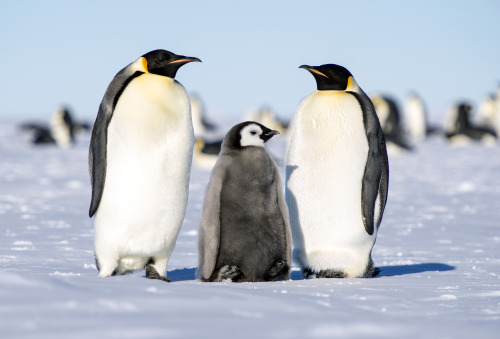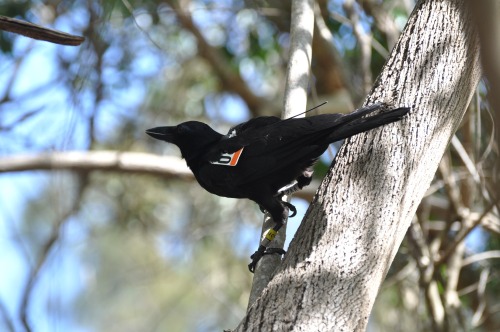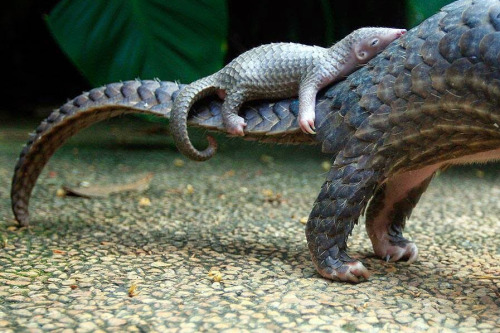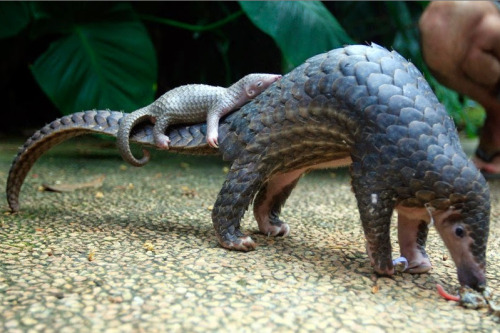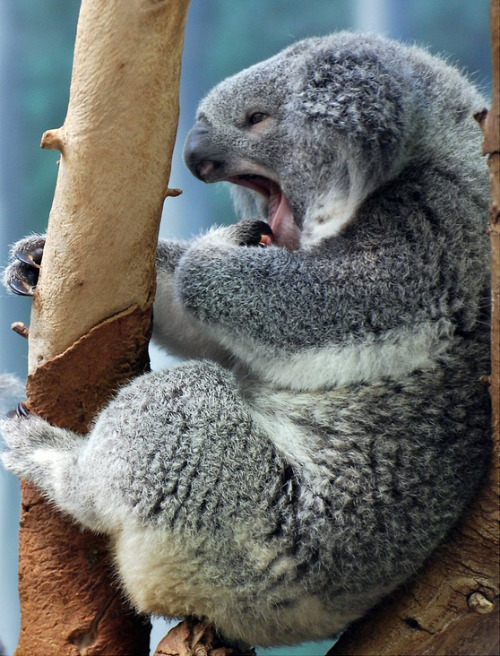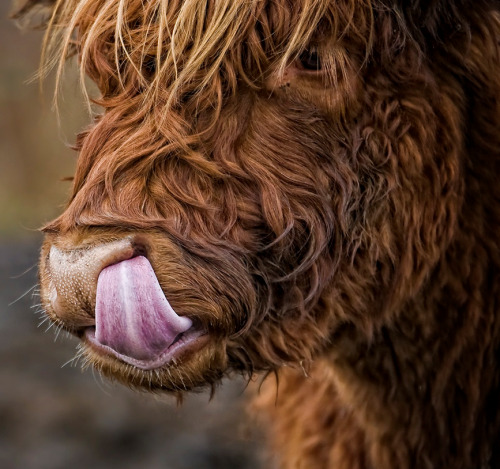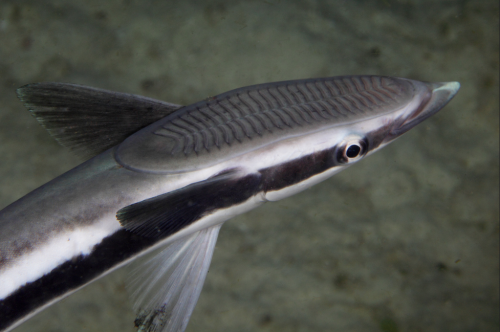#animal behavior
From frogs to humans, selecting a mate is complicated. Females of many species judge suitors based on many indicators of health or parenting potential. But it can be difficult for males to produce multiple signals that demonstrate these qualities simultaneously.

In a study of gray tree frogs, a team of University of Minnesota researchers discovered that females prefer males whose calls reflect the ability to multitask effectively. In this species (Hyla chrysoscelis) males produce “trilled” mating calls that consist of a string of pulses.
Typical calls can range in duration from 20-40 pulses per call and occur between 5-15 calls per minute. Males face a trade-off between call duration and call rate, but females preferred calls that are longer andmore frequent, which is no simple task.
The findings were published in August issue of Animal Behavior.
“It’s kind of like singing and dancing at the same time,” says Jessica Ward, a postdoctoral researcher who is lead author for the study. Ward works in the laboratory of Mark Bee, a professor in the College of Biological Sciences’ Department of Ecology, Evolution and Behavior.
The study supports the multitasking hypothesis, which suggests that females prefer males who can do two or more hard-to-do things at the same time because these are especially good quality males, Ward says. The hypothesis, which explores how multiple signals produced by males influence female behavior, is a new area of interest in animal behavior research.
By listening to recordings of 1,000 calls, Ward and colleagues learned that males are indeed forced to trade off call duration and call rate. That is, males that produce relatively longer calls only do so at relatively slower rates.
“It’s easy to imagine that we humans might also prefer multitasking partners, such as someone who can successfully earn a good income, cook dinner, manage the finances and get the kids to soccer practice on time.”
The study was carried out in connection with Bee’s research goal, which is understanding how female frogs are able to distinguish individual mating calls from a large chorus of males. By comparison, humans, especially as we age, lose the ability to distinguish individual voices in a crowd. This phenomenon, called the “cocktail party” problem, is often the first sign of a diminishing ability to hear. Understanding how frogs hear could lead to improved hearing aids.
To Do or Not to Do: Cracking the Code of Motivation
Our motivation to put effort for achieving a goal is controlled by a reward system wired in the brain. However, many neuropathological conditions impair the reward system, diminishing the will to work. Recently, scientists in Japan experimentally manipulated the reward system network of monkeys and studied their behavior. They deciphered a few critical missing pieces of the reward system puzzle that might help in increasing motivation.
Why do we do things? What persuades us to put an effort to achieve goals, however mundane? What, for instance, drives us to search for food? Neurologically, the answer is hidden in the reward system of the brain—an evolutionary mechanism that controls our willingness to work or to take a risk as the cost of achieving our goals and enjoying the perceived rewards. In people suffering from depression, schizophrenia, or Parkinson’s disease, often the reward system of the brain is impaired, leading them to a state of diminished motivation for work or chronic fatigue.
To find a way to overcome the debilitating behavioral blocks, neuroscientists are investigating the “anatomy” of the reward system and determining how it evaluates the cost-benefit trade-off while deciding on whether to pursue a task. Recently, Dr. Yukiko Hori of National Institutes for Quantum and Radiological Science and Technology, Japan, along with her colleagues have conducted a study that has answered some of the most critical questions on benefit- and cost-based motivation of reward systems. The findings of their study have been published in PLoS Biology.
Discussing what prompted them to undertake the study, Dr. Hori explains “Mental responses such as ‘feeling more costly and being too lazy to act,’ are often a problem in patients with mental disorders such as depression, and the solution lies in the better understanding of what causes such responses. We wanted to look deeper into the mechanism of motivational disturbances in the brain.”
To do so, Dr. Hori and her team focused on dopamine (DA), the “neurotransmitter” or the signaling molecule that plays the central role in inducing motivation and regulation of behavior based on cost-benefit analysis. The effect of DA in the brain transmits via DA receptors, or molecular anchors that bind the DA molecules and propagate the signals through the neuronal network of the brain. However, as these receptors have distinct roles in DA signal transduction, it was imperative to assess their relative impacts on DA signaling. Therefore, using macaque monkeys as models, the researchers aimed to decipher the roles of two classes of DA receptors—the D1-like receptor (D1R) and the D2-like receptor (D2R)—in developing benefit- and cost-based motivation.
In their study, the researchers first trained the animals to perform “reward size” tasks and “work/delay tasks.” These tasks allowed them to measure how perceived reward size and required effort influenced the task-performing behavior. Dr. Takafumi Minamimoto, the corresponding author of the study explains, “We systematically manipulated the D1R and D2R of these monkeys by injecting them with specific receptor-binding molecules that dampened their biological responses to DA signaling. By positron emission tomography-based imaging of the brains of the animals, the extent of bindings or blockades of the receptors was measured.” Then, under experimental conditions, they offered the monkeys the chance to perform tasks to achieve rewards and noted whether the monkeys accepted or refused to perform the tasks and how quickly they responded to the cues related to the tasks.
Analysis of these data unearthed some intriguing insights into the neurobiological mechanism of the decision-making process. The researchers observed that decision-making based on perceived benefit and cost required the involvement of both D1R and D2R, in both incentivizing the motivation (the process in which the size of the rewards inspired the monkeys to perform the tasks) and in increasing delay discounting (the tendency to prefer immediate, smaller rewards over larger, but delayed rewards). It also became clear that DA transmission via D1R and D2R regulates the cost-based motivational process by distinct neurobiological processes for benefits or “reward availability” and costs or “energy expenditure associated with the task.” However, workload discounting—the process of discounting the value of the rewards based on the proportion of the effort needed—was exclusively related to D2R manipulation.
Prof. Hori emphasizes, “The complementary roles of two dopamine receptor subtypes that our study revealed, in the computation of the cost-benefit trade-off to guide action will help us decipher the pathophysiology of psychiatric disorders.” Their research brings the hope of a future when by manipulating the inbuilt reward system and enhancing the motivation levels, lives of many can be improved.
Wait for it… there it is- the WIGGLE! This wiggly bird is the cattle egret (Bubulcus ibis), and this video demonstrates a very cool behavior that’s usually called “neck-swaying”. This is a somewhat uncommon hunting behavior where the bird quickly weaves its head and neck side to side as it approaches a prey item. We’re not entirely sure what the purpose of this hunting method is, but it is suspected to help the bird more accurately assess the distance of their prey, though others believe it is used to distract or disorient prey before the bird strikes. In any case, several studies in foraging behavior of this species suggest that strikes preceded by head-swaying are actually less successful than normal strikes. Although this video ends too soon (my camera was not cooperating), I can say that this particular wiggle did end successfully, as this cattle egret snatched up a very big bug.
How peckish penguins find their food
Animals have used the same technique to search for food that’s in short supply for at least 50 million years, a BBSRC-funded study suggests.
Creatures including penguins search for food using a mathematical pattern of movement called a Lévy walk. It might sound complex, but it is a random search strategy made up of small steps and a few larger steps. Although a Lévy walk is random, it’s the most efficient way to find food when it’s scarce.
Finding food in a timely fashion could be a matter of life or death. Choose the wrong direction and it could be curtains. But moving in a random search pattern is mathematically the best way to find isolated food.
Image credit: Christopher Michel
Stay tuned for more (biological) festivities…
Post link
How crows connect
The New Caledonian crow is well-known for its ability to make and use tools to poke nutritious insects out of their hiding places.
An international team led by the University of St Andrews has studied the social networks of crows to understand how tool-use might spread between birds and across communities.
The team looked at the social interactions of wild New Caledonian crows in their tropical habitat. Each crow was fitted with a high-tech, miniature spy tag which provided a record of which crows met at any given time.
They found that providing the crows with food had a similar effect to putting out a plate of freshly baked cookies – individual crows hang around the supply which can accelerate the spread of interesting information.
Scientists still don’t know how much of their tool-use behaviour New Caledonian crows learn from each other, but the study shows that opportunities for information exchange are plenty, especially when important resources encourage birds to forage in the same place.
Images: James St Clair, James St Clair, Jolyon Troscianko
Post link
How workers can become queens
A honey bee’s fate is decided at birth. The larvae develop to become a queen or a worker. If you’re born a queen, you get to rule the hive.
But other insects are more flexible.
For example, paper wasps and dinosaur ants are able to switch role from worker to queen at any point in their life - and new research uncovers the basis of this flexibility.
Researchers from the University of Bristol, the Babraham Institute and the Centre for Genomic Regulation analysed individual wasp and ant brains from queens and workers of both species to see whether caste differences could be explained by variations in how the genome is ‘read’ and regulated.In the paper wasps as seen in the video above, the queen is identifiable by behaviours such as shaking the abdomen and aggression to exert dominance.
By looking at the genetic makeup of the insects, the researchers were able to determine what genetic influences were controlling behaviour.
They found very little difference between roles, which was surprising given that hundreds of genes are involved in determining the differences between queens and workers in the honeybee.
This suggests that there is no single master gene determining the role of these wasps and ants.
So you don’t have to be born a queen after all…
Video: Solenn Patalano
Watch this caterpillar fling its beetle attacker through the air
Soft, squishy caterpillars might seem like easy prey to a hungry predator, but one species doesn’t give up without a fight. Fully developed caterpillars of the hornworm moth (Langia zenzeroides) use a mix of squeaks, strikes, and vomit to defend themselves from predators, researchers report this month in the Biological Journal of the Linnean Society.
Listen to this killer whale say ‘hello’ and ‘bye-bye’
When it comes to echoing human speech, parrots are the superstars of the animal world—but a killer whale named Wikie may not be far behind. The 14-year-old orca showed off her vocal skills by imitating her trainer’s words, saying things like “Amy” and “bye-bye.” Researchers got her to do this by first training her to obey a hand signal that meant “copy this,” which, for instance, was used to instruct her to copy another orca squirting water into the air. Then, they presented her with sounds she had never heard before—five sounds from other orcas and six phrases spoken by trainers—and asked her to repeat them. In all trials, Wikie responded to the command by uttering something that roughly matched the sound that she was asked to copy, the team reports today in the Proceedings of the Royal Society B. Sometimes it took as many as 17 tries to get it right, but she got four of them on her first try, including the human phrases “hello” and “one, two, three.” Orcas form tight-knit groups in the wild, each with their own dialect, so scientists think that their ability to learn new sounds may be key to how they communicate and interact with one other.










While myself and many other bird watchers from around New York State have been enjoying the visiting Swallow tailed kite. Not everyone has been enthused by its appearance, this harassing accipter (either coopers or sharp shinned hawk but I’m leaning towards coopers) is attempting to let the kite know it isn’t welcome in its territory. Taken 9/6/21.
A baby pangolin is born quite helpless, other than the ability to suckle and cling. Until the baby is big enough to travel on its on, a mother pangolin will tote it around on her tail.
Images:Firdia Lisnawati
Post link
Springboks are known for “pronking” in which they spontaneously jump up to 13 feet in the air. Some researchers believe these antelopes pronk to display their strength and agility to nearby predators.
Image credit: Prakash Srinivasan
Post link
This baby macaque (looks like a bonnet macaque of southern India?) seems to be carefully investigating a potential food item.
Image credit: Josh Blaze
Post link
Remoras are known for clinging to sharks and other large marine animals for food and protection. To attach to their host, they have an oval disc on the top of their head that acts as a super strong suction cup.
Image credit: Klaus Stiefel
Post link
These two polar bear cubs are trailing behind their mother between ice floes. Anyone know if this swimming behavior is normal?
Image credit: Dennis Bromage
Post link
Many owls, like this oriental bay owl, have modified feathers around their eyes that are similar to mammalian eyelashes. The bristly plumage acts as protection from debris during flight.
Image credit: Dave Irving
Post link
When feeding, a slingjaw wrasse will extend its upper and lower jaws outwards. The elongated mouth then acts as a straw to suck up prey items.
Image credit: Jason Isley
Post link



